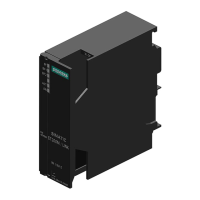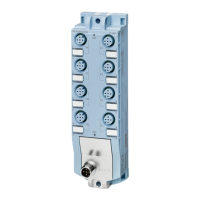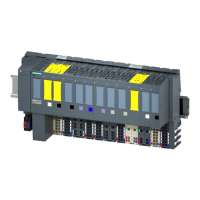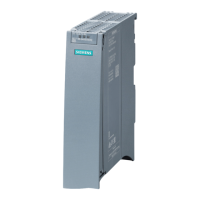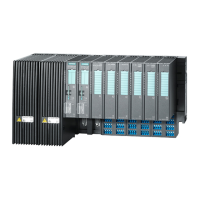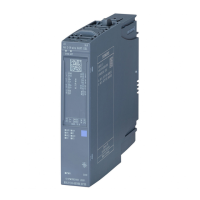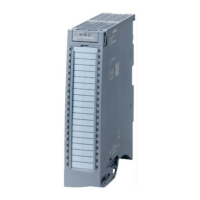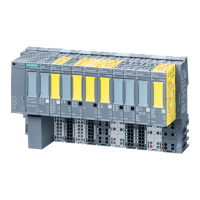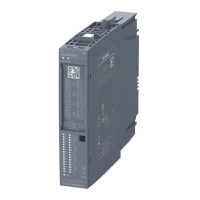SIMATIC - ET 200pro motor starter
xi GWA 4NEB 950 5661-02 DS 04
Illustrations
Figure 1-1: ET 200pro with motor starters . . . . . . . . . . . . . . . . . . . . . 1-6
Figure 1-2: ET 200pro with motor starters and electronic modules . . . . . . . . 1-6
Figure 1-3: ET 200pro with motor starters up to category 4 . . . . . . . . . . . . 1-7
Figure 2-1: Components and configuration for the example . . . . . . . . . . . . 2-3
Figure 2-2: Set PROFIBUS address 6 . . . . . . . . . . . . . . . . . . . . . . . 2-4
Figure 2-3: Circuit for the example . . . . . . . . . . . . . . . . . . . . . . . . . 2-5
Figure 2-4: Assemblies in 'HW Config' . . . . . . . . . . . . . . . . . . . . . . . 2-7
Figure 2-5: View in the status window 'DP slave diagnosis' . . . . . . . . . . . . 2-12
Figure 3-1: Installation position . . . . . . . . . . . . . . . . . . . . . . . . . . . 3-2
Figure 3-2: Diagrams for derating . . . . . . . . . . . . . . . . . . . . . . . . . 3-5
Figure 6-1: Rear wall bus module . . . . . . . . . . . . . . . . . . . . . . . . . 6-1
Figure 7-1: View of maintenance isolating module . . . . . . . . . . . . . . . . . 7-2
Figure 7-2: Circuit diagram of maintenance isolating module . . . . . . . . . . . 7-3
Figure 7-3: Assignment of the main power connections
at the maintenance isolating module . . . . . . . . . . . . . . . . . . 7-3
Figure 7-4: View of safety local maintenance isolating module . . . . . . . . . . 7-6
Figure 7-5: Circuit diagram for safety local maintenance isolating module . . . . . 7-7
Figure 7-6: Assignment of the main power connections
at the safety local maintenance isolating module . . . . . . . . . . . 7-7
Figure 7-7: Assignment of the auxiliary current circuits
at the safety local maintenance isolating module . . . . . . . . . . . 7-8
Figure 7-8: Configuration of the safety local maintenance isolating module . . . . 7-8
Figure 7-9: View of disconnecting module 400 V . . . . . . . . . . . . . . . . . 7-11
Figure 7-10: Circuit diagram for disconnecting module 400 V . . . . . . . . . . . . 7-11
Figure 7-11: Assignment of the connectors on the disconnecting module 400 V . . 7-12
Figure 7-12:Current flow in the power bus . . . . . . . . . . . . . . . . . . . . . 7-13
Figure 8-1: View of DSe and RSe motor starters, standard and high feature . . . 8-4
Figure 8-2: View of electronic starters sDSSte / sDSte and sRSSte / sRSte . . . . 8-5
Figure 8-3: Assignment of the main power connections at the motor starter . . . 8-6
Figure 8-4: Assignment of M12 plug connector at the motor starter . . . . . . . 8-7
Figure 8-5: Circuit diagram – DSe direct starter, standard and high feature . . . . 8-8
Figure 8-6: Circuit diagram – RSe reversing starter, standard and high feature . . 8-9
Figure 8-7: Electrical service life of contactor . . . . . . . . . . . . . . . . . . . 8-16
Figure 8-8: Typical current and torque characteristics of a 3-phase induction motor 8-17
Figure 8-9: Current and torque characteristics with star-delta start . . . . . . . . 8-18
Figure 8-10: Phase control of the mains voltage by means of
semiconductor elements on the soft starter sDSSte / sRSSte . . . . . 8-19
Figure 8-11: Current and torque characteristics when a soft starter is used . . . . 8-20
Figure 8-12: Time ramp / time diagram, sDSSte / sDSte, sRSSte / sRSte . . . . . . 8-23
Figure 8-13:Duty cycle . . . . . . . . . . . . . . . . . . . . . . . . . . . . . . . 8-24
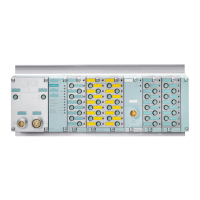
